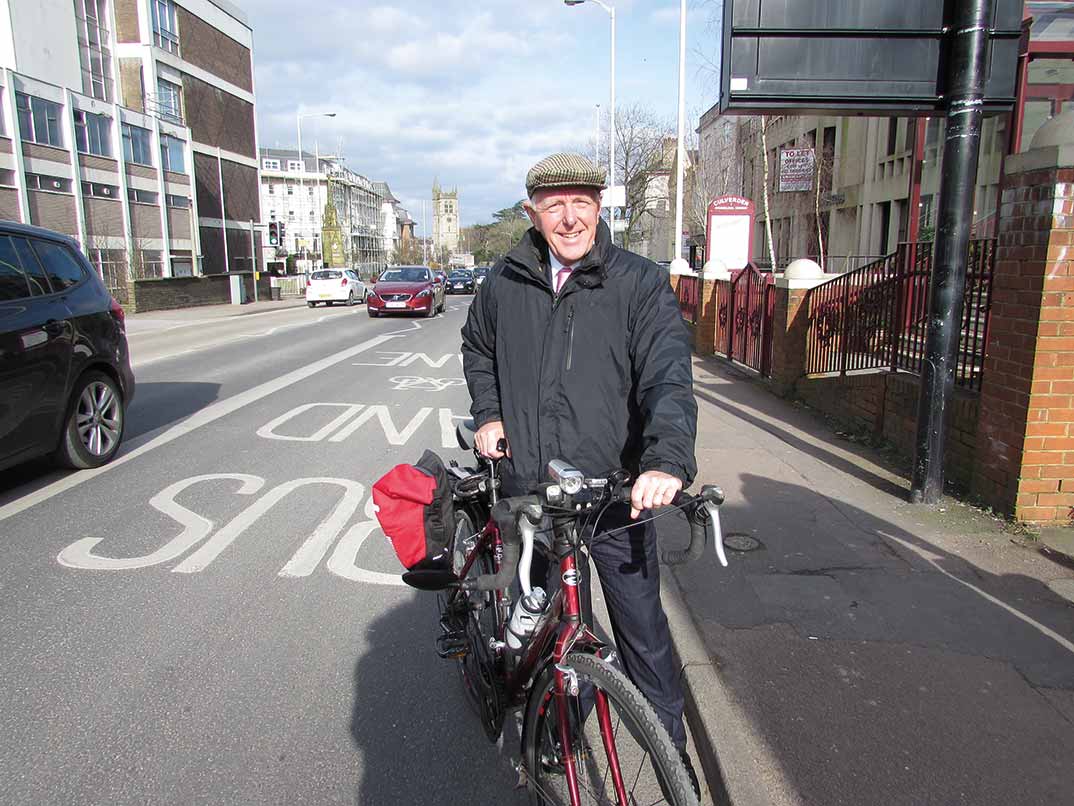A campaign group believes £20 million should be spent on a cycling network for Tunbridge Wells, and claims it would offer greater value than the £70 million being paid out on the A21 road upgrades.
Paul Mason, of the Tunbridge Wells Bike Users Group (TWBug), believes the area’s present cycling facilities are inadequate, with only one route into the town having dedicated lanes from Pembury.
He explained that a multi-million project for specific bike routes from the town’s five main roads would help ease major traffic issues, and could be achieved with sufficient government financial support.
Mr Mason said: “Around £20 million would take care of cycling provisions for all the five main roads within the town. I think this can be done, especially given how much the dualling of just two miles of the A21 at Pembury is costing at £70 million.
“This will just funnel more traffic into a town which is already congested. If you build cycling routes, this will help with congestion and also tackle other issues such as people’s inactivity that leads to obesity.”
The campaigner added that TWBug had already had several meetings with MP Greg Clark on improving cycling routes, and plans to speak to him again on the borough’s cycling strategy.
Consultation
Mr Mason highlighted the success of public cycling initiatives in countries such as Holland and Denmark, as examples of how infrastructure problems could be tackled with the right level of investment in alternative transport.
His comments come after the borough council in a joint venture with Kent County Council, the Joint Transportation Board, agreed a four year cycling strategy for Tunbridge Wells. This had included a public consultation before Christmas that revealed 34% of respondents cited road congestion as a key reason for not cycling.
This was followed by 29 percent of people highlighting the fact there were not enough dedicated cycle paths within the area. It also found that just 0.8 percent of residents (662) commute to work through cycling, compared to the county’s highest figure of 1.7 percent in Ashford.
Schools in the borough were also shown to have an especially low rate of cycling – of the 16 that responded to the public consultation, only eight had any bike facilities at all on their premises. On average, only seven pupils in each of those schools cycled each day.
As part of the new cycling strategy, the Joint Transportation Board has proposed more than 10 new cycling routes for the borough, though timescales or costing of these have yet to be established. It also identified a need to implement more reduced speed 20mph road zones.
The proposed new cycle paths include routes between Tonbridge to Tunbridge Wells via the A26, Pembury to Tunbridge Wells via the A264, Paddock Wood circular route, routes across The Commons, 21st Century Way including Home Farm Lane link, Woodsgate Corner to Vauxhall Lane via Tonbridge Road and A21, Forest Road to Grove Hill Road via Farmcombe Road, A26 London Road to Dowding Way via Barnetts Wood, and Langton Green to Tunbridge Wells including Rusthall and Speldhurst links.
Conservative borough councillor Alan McDermott, who chairs the Tunbridge Wells Cycling Forum, said the cycling strategy would offer a strong basis to develop specific routes.
However, he conceded it was likely progress would be slow on the issue, given that less than 1 percent of residents presently commuted by bicycle – which he hoped would increase in the coming years to a figure of 10 percent with greater cycling facilities.
He said: “Cycling rates in Tunbridge Wells are very low due to a range of actual and perceived barriers, including a lack of confidence to cycle, insufficient infrastructure and road safety concerns.
“Yet we know that the appetite exists, following the establishment of an active and well-supported Borough Cycling Forum, and growing public interest in cycling with events such as the Tour De France, Ride London and the Great Tunbridge Wells Bike Ride.
“The strategy puts forward ambitious, yet practical proposals for a network of high quality cycle routes within urban areas of the borough.”








